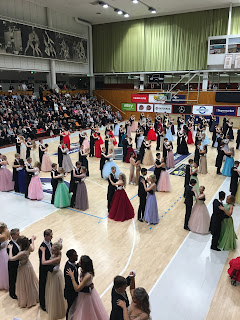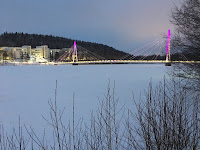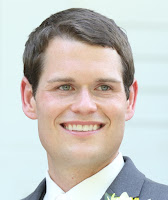For many people, graduating high school is a rite of passage. It is one of life’s big transitions. There are many ways to celebrate this momentous occasion. In the Unites States for instance, seniors take professional photographs, purchase a class ring, go to the prom, and walk the line wearing a hat and gown. Finnish students also celebrate their school careers but in a different way. I was lucky to be in Finland in February to witness two of Finnish schools biggest events. Maybe somewhere in the U.S., a high school will give the Finnish way a try.
Time to Study. But First…
At the end of Finnish students’ 12th grade year, they take the all-important Matriculation Examination. Passing the Matriculation Exam makes a student eligible for continuing his or her studies at a publicly funded university. It’s a big deal. It is so important that upper secondary schools (high schools) give these students time off from school to study. I wish I had had that kind of time when I was preparing for the ACT.
The Matriculation Exam is intense. According to the Matriculation Examination website:
The Matriculation Examination consists of a minimum of four tests; one of them, the test in the candidate’s mother tongue, is compulsory for all candidates. The candidate then chooses three other compulsory tests from among the following four tests: the test in the second national language, one foreign language test, the mathematics test, and one test in the subjects of humanities and natural sciences. One of these three compulsory tests has to be of an advanced syllabus level. Advanced syllabus level is offered in the second national language test, the foreign language test, and the mathematics test. As part of his or her examination, the candidate may include one or more additional tests. Additional tests are of equal value with compulsory tests.
Before students take their leave of absence to hit the books, they partake in a massive procession called, Penkkarit. Graduating students parade the streets in trucks, which they adorn with banners. Some groups wear costumes but all throw out loads of candy. The amount of candy spectators receive puts Halloween to shame.
May I Have This Dance?
Now that the 12th grade students are out of school studying, that makes 11th graders the oldest students. These students celebrate their new status on the night of the parade with an event called Vanhojentanssit, the Olds' Ball. The people attending the dances are called wanhat ("seniors"). The main aim of the ball is to highlight the ascension of the students to the status of seniors in the schoolyard hierarchy (Source—YLE).
Students dress in fine ballroom clothing, much like you would see at a senior prom in America. But this event is public. Families and friends are invited to watch the new seniors perform choreographed dances. They rehearse in partners months in advance. It was a magnificent show! Students took each performance seriously but were obviously having fun. They danced consecutively for nearly two hours! The audience never took their eyes off the dance floor.
After the 12th grade students officially complete school in early June, there is an official graduation ceremony called, ylioppilasjuhla. This is when students receive their graduation caps and move on to the next big step in life. Congratulations and good luck!
Read more »
The Matriculation Examination consists of a minimum of four tests; one of them, the test in the candidate’s mother tongue, is compulsory for all candidates. The candidate then chooses three other compulsory tests from among the following four tests: the test in the second national language, one foreign language test, the mathematics test, and one test in the subjects of humanities and natural sciences. One of these three compulsory tests has to be of an advanced syllabus level. Advanced syllabus level is offered in the second national language test, the foreign language test, and the mathematics test. As part of his or her examination, the candidate may include one or more additional tests. Additional tests are of equal value with compulsory tests.
Before students take their leave of absence to hit the books, they partake in a massive procession called, Penkkarit. Graduating students parade the streets in trucks, which they adorn with banners. Some groups wear costumes but all throw out loads of candy. The amount of candy spectators receive puts Halloween to shame.
Now that the 12th grade students are out of school studying, that makes 11th graders the oldest students. These students celebrate their new status on the night of the parade with an event called Vanhojentanssit, the Olds' Ball. The people attending the dances are called wanhat ("seniors"). The main aim of the ball is to highlight the ascension of the students to the status of seniors in the schoolyard hierarchy (Source—YLE).
Students dress in fine ballroom clothing, much like you would see at a senior prom in America. But this event is public. Families and friends are invited to watch the new seniors perform choreographed dances. They rehearse in partners months in advance. It was a magnificent show! Students took each performance seriously but were obviously having fun. They danced consecutively for nearly two hours! The audience never took their eyes off the dance floor.

































